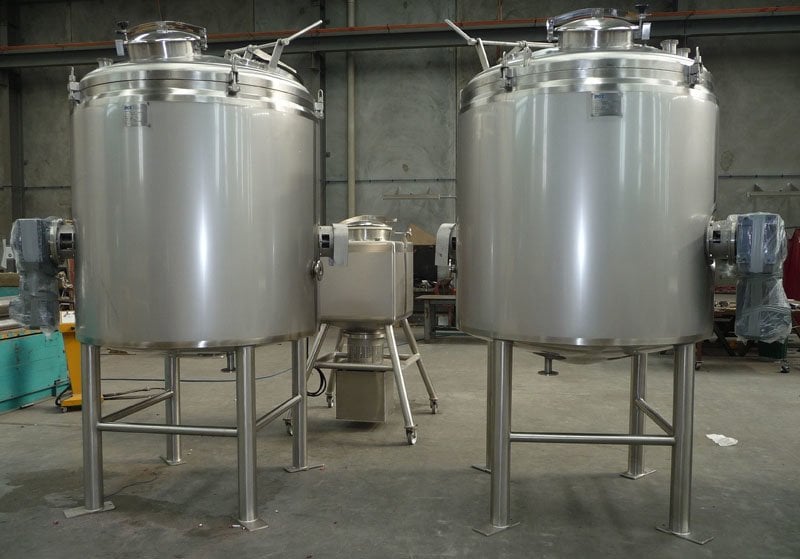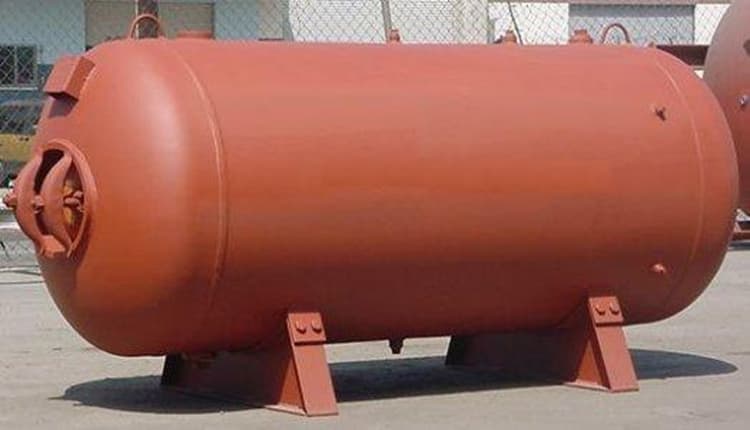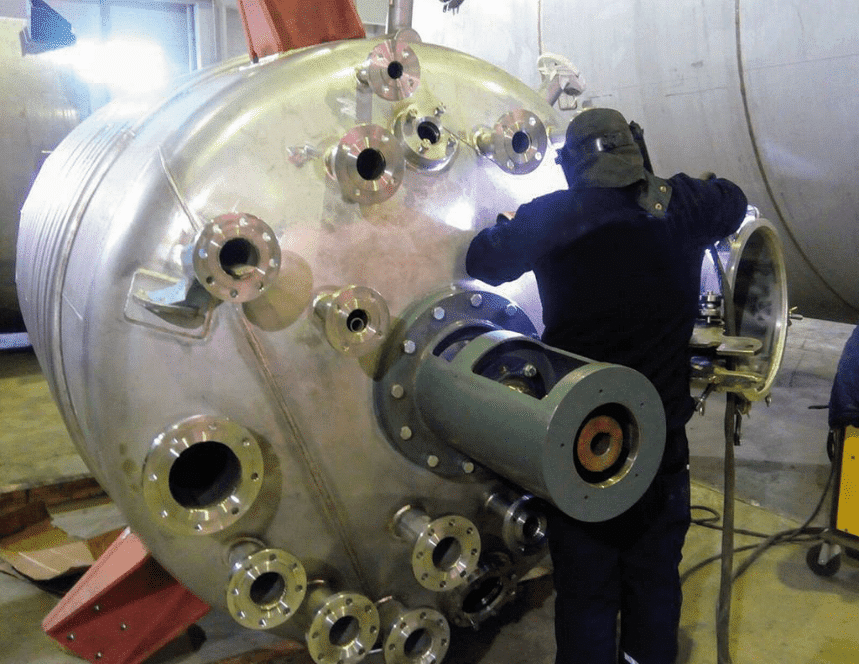The term ‘pressure vessel’ conceptually represents all kinds of systems having the purpose of confining a high amount of liquid or gas under a defined area with constant pressure. Pressure vessels can be utilized for varying purposes in many different industries, therefore they represent an essential element having a very crucial role in entire process systems. By the aim and inherent of pressure vessels, their manufacturing and operation processes may be vitally hazardous, hence it is highly significant to keep under control the process by stringent regulations.
Introduction to Pressure Vessels
Pressure vessels are enclosed containers used to store or transfer liquids and gasses under a pressure different from their surrounding environment. When the working principle is considered, it appears that these leak-proof tanks should be offering a wide range of improved mechanical and chemical properties to accord application conditions and generated stress inside. Requirements arising from the application indicate that vessels can be defined as a product of advanced engineering work including a well-designed production process and proper material selection.
Shapes of Pressure Vessels

As it has mentioned before, pressure vessels can be utilized in many fields, therefore it is possible to design tanks having different sizes and geometry in light of the needs of the application. Theoretically, pressure vessels can be produced in any shape however the most commonly utilized tanks are in the shape of cylinders, spheres, and cones. A typical design is a cylinder with two heads (end caps) which are generally torispherical or hemispherical. More complex shapes are usually more difficult to produce and less safe to use. Besides complexity, there are other constraints in the shape design of a pressure vessel. To illustrate, theoretically spherical vessels tend to carry higher stress than a cylindrical one having identical wall thickness therefore, spherical ones are considered more effective in holding internal loading. However, producing a spherical vessel is much more challenging and expensive than producing cylindrical vessels. A typical design of a cylindrical vessel having two elliptical end cups is a successful example of overcoming such a dilemma.
Types of Pressure Vessels
Despite that a basic pressure vessel is designed to store a liquid or gas under constant pressure, they can also be utilized for varying purposes. It is possible to define pressure tanks in five groups due to their utilization purpose.
- Storage Vessels: Storage is the most common purpose of using pressure vessels. Storage vessels are produced to store and limit particular products that may react with surrounding as petroleum products, chemicals, or sometimes even air and water.
- Heat Exchangers: Heat may be a waste product that needs to be removed from the environment or, a requirement for a chemical process to be initiated. Heat exchangers allow us to remove or store heat depending on the need of the process.
- Process Vessels: Process vessels are containers in which processes or reactions such as combining several products to create another or removing aspects from an existing product takes place. At the end of the process, the overall content in the vessel always changes.
- Fractional Distillation: These types of tanks are generally used to separate complex chemicals or mixtures by heating them until one component evaporates. The basis of the working principle relies on the difference between boiling points of elements within the mixture. The aim is to reach the boiling point of the compound that is aimed to be removed, and separate it by vaporizing.
- Pressure Reactors: The purpose of pressure reactors is to force chemical reactions to take place, which should be above the boiling point of the solvent.
Applications of Pressure Vessels

The global pressure vessel market has recently been occupied by the three main industries as chemical and petrochemical, oil and gas, and energy generation. Moreover, the food industry, mining, water treatment, pharmaceuticals, submarine, and space ship habitats can also be included in the market as other shareholder industries. Here the food industry appears as a remarkable application since the material which pressure vessels are made of is in direct contact with food. Besides the fact that producing a pressure vessel is challenging by itself, when food contact is present, vessels also require specific surface treatments as electropolishing or mechanical polishing, which leads to the process last much longer. The requirement for pressure vessels in the food industry arises from the need for mixing, processing, storing, cooking, and refrigerating the foods and beverages in the most possible healthy manner. For this purpose, storage, process, and mixing tanks are being widely used in the entire industry. As an illustration, dairy equipment is being widely utilized for both producing and storing, and even pasteurizing milk. Industrial diversity refers to the versatility and improvability of pressure vessels. This means, by using the proper materials during construction, it is possible to store both foods like chocolate, milk, coke, and chemicals and oils like ammonia, chlorine, and LPG in pressure tanks. In other sectors, they may also appear as industrial compressed air receivers and domestic hot water storage tanks.
Design Constraints
As it has mentioned before, pressure vessels may constitute dangerous, even fatal accidents during production and application inherently, therefore their design and production processes should be well-designed by considering some regulations. Rules for the construction of pressure vessels have been established by The American Society of Mechanical Engineers (ASME). Regulations include materials, assembly, and safety details to ensure the production process satisfies industrial needs without causing any detrimental situation. It is possible to investigate the design requirements of a pressure vessel in three subjects.
1. Operational Requirements: The first stage of pressure vessel design is to identify operational requirements which represent application conditions.
- Operating Pressure: Steady-state pressure and maximum pressure within a vessel should be defined.
- Fluid Conditions: Since temperature change and physical and chemical properties of the fluid can influence the base material of the vessel, they should be specified in detail, and material selection should be carried on by considering these specifications.
- External Loads: Besides internal loading, external loading can influence the performance of the vessel. Therefore, local loads as piping reactions and dead weights of parts that are supported by the tank, and for the cases that vessel is utilized out-door, environmental factors as rain, snow and wind should be identified.
- Transient Conditions: Some vessels may be exposed to cyclic loads resulting from operating pressure, temperature, structural and acoustic vibration loading.
2. Functional Requirements: Functional requirements includes geometrical parameters which some of them are defined by the plant design team while, some are left to the discretion of the pressure vessel designer. The functional requirements are listed as below:
- Size and shape of the vessel
- Support design
- Location and size of attachment and nozzles
3. Material Requirements: Material selection may be defined as the most challenging and risky stage of pressure vessel design. Some international standards define acceptable materials with acceptable temperature and design stress. Design stress for each possible material is set by using some safety factors as:
- Yield strength at design temperature
- Ultimate tensile strength at room temperature
- Creep strength at design temperature
After defining the three properties given above, the most proper materials are determined by also considering some other important mechanical properties as ductility, toughness, embrittlement under operating conditions, and fatigue strength. Steels, especially stainless and low carbon steel are the most generally used materials, although other metal alloys as titanium alloys, nickel alloys, and Hastelloy can also be useful depending on operational requirements.
Manufacturing and Testing
Manufacture process initiates with the determination of design constructions. After the material selection has been completed, proper raw materials are supplied whether in form of plates, wires, rods, or pipes. Later on, they are cut and machined if required. Here, the most crucial point is to obtain a surface properly for welding thereby, all the precautions should be taken to avoid mechanical compromise. Machined parts are then assembled by welding in the required geometry. Depending on the material type and thickness at the weld point, some heat treatment procedures as preheating, and post-weld heating may be required. At each step, products should be inspected by the authority. During construction, some non-destructive test methods are applied to check whether the test piece satisfies the standards or not. For detecting weld surface flaws, magnetic particle or dye penetrant methods are utilized, so that discontinuities on the surface, or near the surface can be identified. X-ray inspection may be an alternative to detect subsurface cracks, however since it is a highly expensive method, it is not commonly preferred unless a very critical weld point is not present. Ultrasonic inspection is a more common and relatively easy way to detect both surface and subsurface defects.
Standards
Pressure vessels are designed to be operated under specific pressure and temperature. Since they hold high amounts of fluids under high pressure and temperatures, their operation and production may lead to the occurrence of significant hazardous situations. Therefore, the design, fabrication, and operation conditions of pressure vessels have been regulated and standardized by several international organizations. Some of the highlighted standards are listed below:
- ISO 11439: Compressed natural gas cylinders.
- AS 1210: Australian Standard for the design and construction of pressure vessels.
- BS 4994: Specification for design and construction of vessels and tanks in reinforced plastics.
- B51-09: Canadian Boiler, pressure vessel, and pressure piping code.
- ASME Boiler and Pressure Vessel Code Section VIII: Rules for construction of pressure vessels.
- EN 13445: The current European standard, harmonized with the pressure equipment directive.
You may also be interested in these blog posts:
Pressure Vessels – Everything you need to know
A BRIEF INTRODUCTION TO PRESSURE VESSELS
References
https://www.oil-jobs-recruitment.com/pressure-vessels-oil-gas-industry
https://www.maximizemarketresearch.com/market-report/global-pressure-vessel-market/23071/
https://www.azom.com/article.aspx?ArticleID=15034
https://www.wattco.com/2015/02/what-is-a-pressure-vessel/
http://thermopedia.com/content/1058/
https://en.wikipedia.org/wiki/Pressure_vessel#Construction_materials
https://forgedcomponents.com/what-are-some-of-the-uses-for-pressure-vessels/
https://nigen.com/asme-pressure-vessel-welding-code-rules/
https://www.bepeterson.com/blog/6-best-materials-ideal-for-pressure-vessel-applications/
https://www.buckeyefabricating.com/page/pulp-and-paper
https://www.indiamart.com/mukundindustries/food-and-dairy-processing-equipment.html


